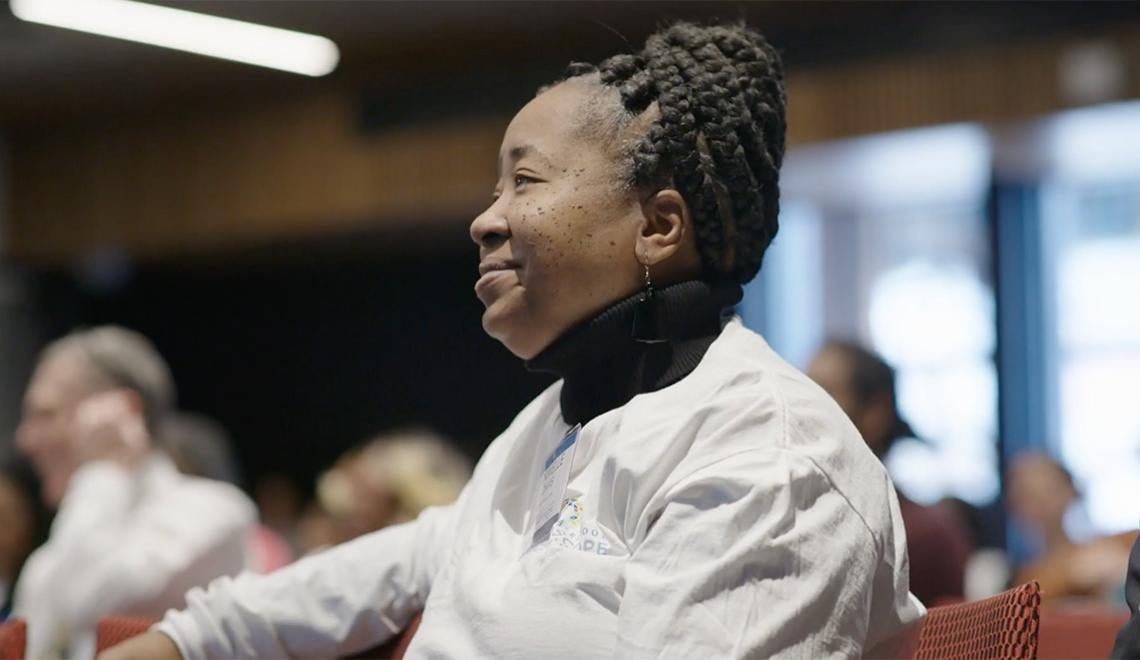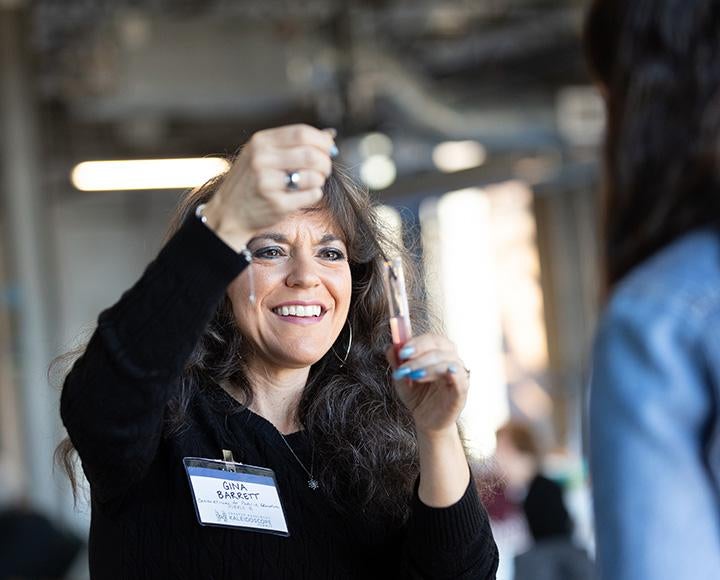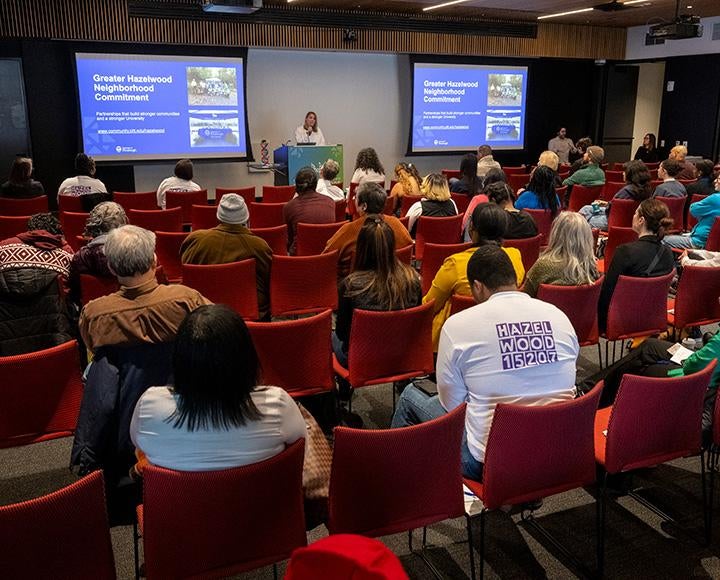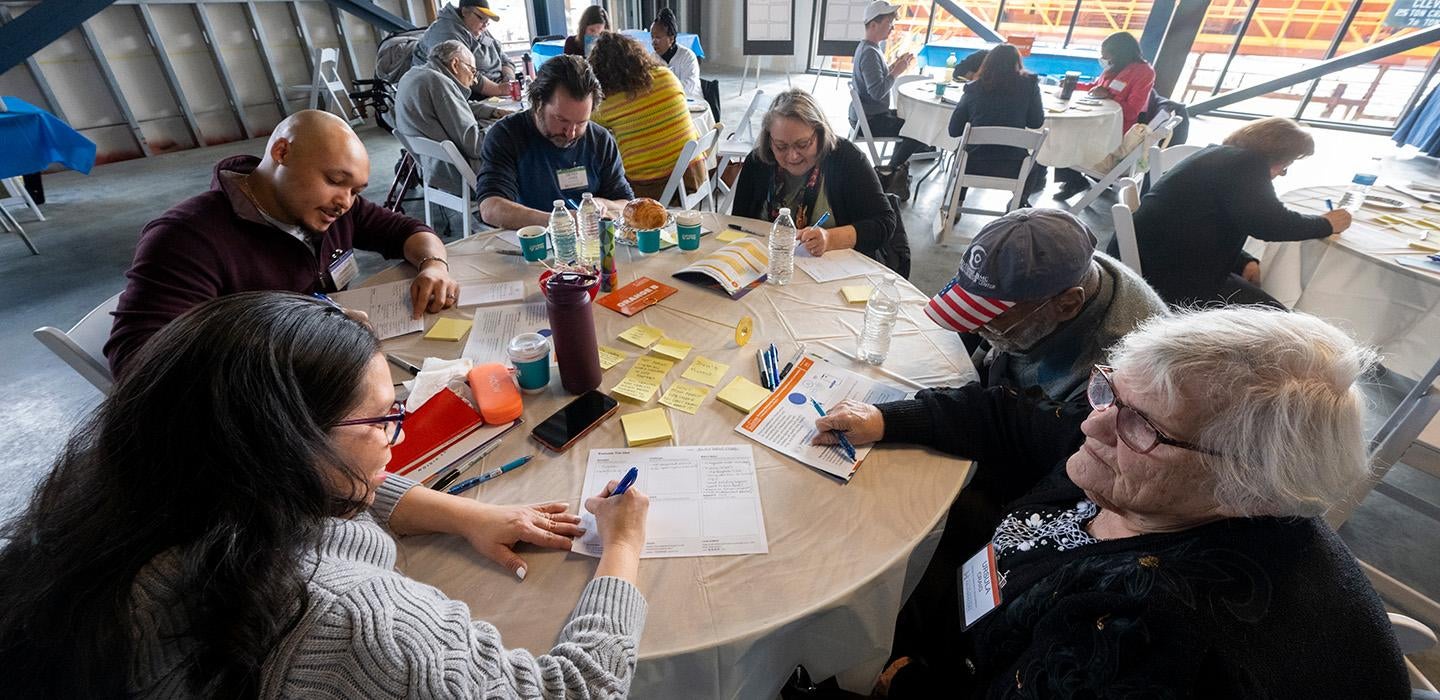
Subscribe to Pittwire Today
Get the most interesting and important stories from the University of Pittsburgh.Pitt has collaborated for more than 25 years with residents and community leaders to help ensure a brighter future for Greater Hazelwood. During the past year, a team of community and University leaders have explored how the field of life sciences can bring employment and educational opportunities to residents there.
“It's essential to connect the needs of the Greater Hazelwood community to what's happening in the life sciences so everyone can have a say in shaping the future,” said Heidi Ward, director of planning for Pitt’s Office of Engagement and Community Affairs’ community and life sciences integration and a Greater Hazelwood resident.
The link between Greater Hazelwood — which includes Pittsburgh’s Glen Hazel and Hazelwood neighborhoods — and the life sciences is intuitive. Hazelwood Green, the 178-acre former Jones and Laughlin Steel mill site, is home to multiple Pittsburgh-based technology institutions. There, the University of Pittsburgh is leading the development of Pitt BioForge, a biomanufacturing facility that will help create a life sciences corridor along the Monongahela River.
Life sciences help us understand living things from the tiniest cell to the tallest tree on Earth; the field is crucial to advancing our knowledge of human health and pursuits like curing cancer, preventing vision impairment and detecting birth defects.
On a recent snowy Saturday morning at Mill 19 in Hazelwood Green, Pitt continued building on its work of bringing together the voices of residents, local foundation leaders, nonprofit staff and University representatives to discuss what this future will look like for everyone.
The daylong Greater Hazelwood Kaleidoscope Summit held on Feb. 24 hosted a meaningful dialogue on the role life sciences could play in uplifting the neighborhood and identified shared ideas and next steps to move those ideas forward.
Summit attendees were led through a series of small group exercises designed to elicit big picture thinking. The groups were divided into four topic areas — education, community development, workforce advancement and cross-cutting initiatives, ideas with the potential to incorporate all other priority areas — to brainstorm topics, including ways to bolster affordable housing stock, develop job readiness programs for young adults and use public art to promote neighborhood culture.

Resident Andrea Coleman-Betts, 65, is part of a five-generation lineage living in Hazelwood, and attended to learn how life sciences can benefit younger generations.
“I want my grandchildren and great-grandchildren to have better opportunities in workforce development, economic development and social development, especially in education,” she said.
“The word ‘green’ [in Hazelwood Green] makes me think of hope and sustainability,” Coleman-Betts said. “I want Hazelwood to grow stronger.”
Pitt’s engagement with the Greater Hazelwood community is also instructive for students. Kim Le, a senior in the David C. Frederick Honors College, collaborated with Ward on a life sciences activity booklet distributed at the summit.
“The opportunity to interact with the community allows for understanding the relationship between the institution and the city, engagement, and an overall feeling of connectedness to Pittsburgh as a whole,” said Le, who’s majoring in biology and minoring in chemistry and gender, sexuality, and women’s studies.
Coleman-Betts and Le were among the 130 people who participated in collaborative conversations and idea generating at the summit. Attendees not only got to talk about science, they got to see it firsthand. After the small group exercises, an ad hoc science lab appeared, and attendees were invited to try their hands at extracting DNA from strawberries, view petri dishes of bacteria under a microscope and explore how T-cells attack infections by playing a puzzle matching game.


In the coming months, the summit planning team will conduct follow-up discussions informed by the attendees’ feedback and recommendations and draw up actionable next steps.
“The ultimate goal is to move some of these big ideas forward and to show what’s possible with true collaboration between the community and the University,” Ward said.
In addition, the University is working to establish its third Community Engagement Center in Greater Hazelwood, which is a staffed, dedicated space to facilitate long-term, mutually beneficial collaborations between the local community and Pitt. The site’s leadership will liaise between the expanding life sciences developments and those living just a few blocks away in Greater Hazelwood.
— Nichole Faina, photography by Tom Altany except as noted
A community-engaged anchor institution
The Anchor Initiatives are a suite of strategies developed to leverage the University’s role as an economic anchor to Southwestern Pennsylvania. An integral component to the Plan for Pitt, the Anchor Initiatives amplify Pitt’s regional impact in the areas of buying, building and hiring locally; community engagement and partnerships; placemaking; and workforce development. Learn more about Pitt’s Anchor Initiatives.


